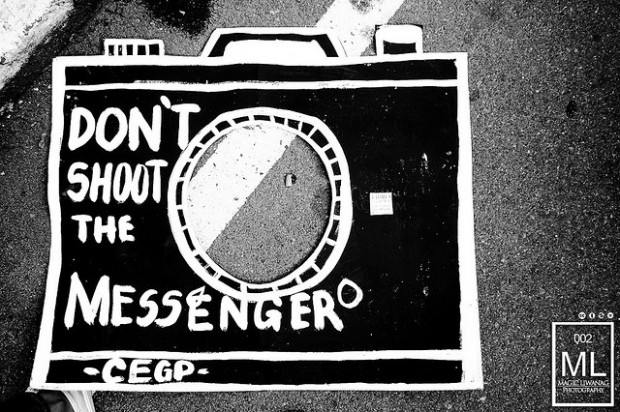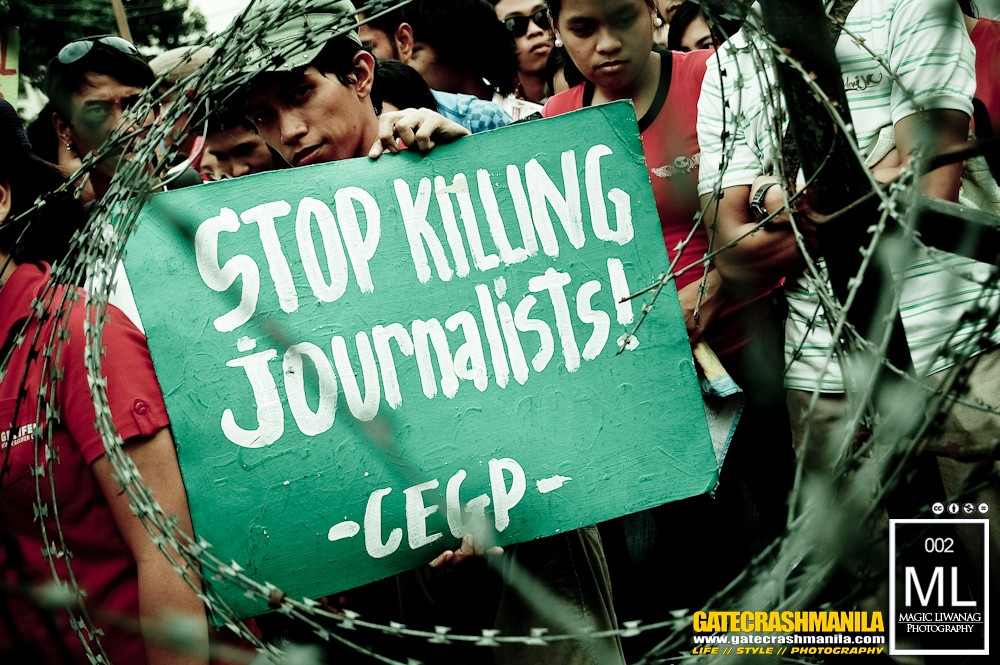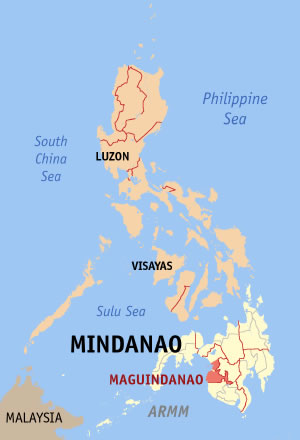On November 23, 2009, a convoy of 58 men and women, 32 of them journalists, were slaughtered by gunmen outside of Ampatuan, a town in the southern Philippine province of Maguindanao. The victims were headed to the provincial office of the Commission on Elections to watch the wife of Esmael Mangudadatu file his certificate of candidacy for Maguindanao’s gubernatorial post.
The Ampatuan Massacre underscores the chaos and violence of Philippine politics — it was carried out on orders from the Ampatuans, a clan who has traditionally controlled Maguindanao and who, by all accounts, wasn’t eager to sacrifice this control. Furthermore, the massacre spotlights the culture of impunity enjoyed by those in the Philippines who threaten and kill journalists.
Every year, the Committee to Protect Journalists releases its Impunity Index, which measures cases around the world where journalists are murdered but their killers go unpunished. Since 2010, the Philippines has ranked number 3 on the index, behind only Iraq and Somalia in 2013 and 2014. In the case of the Maguindanao Massacre, Freedom House notes that just 104 of the 196 suspects have been arraigned and only 108 arrested.
Despite the ongoing and unpunished violence against journalists, investigative journalism in the Philippines continues to thrive, shedding light on corrupt politicians, bad governance, and money politics. In the United States, investigative journalism is best exemplified by Woodward and Bernstein’s reporting on the Watergate Scandal. In the Philippines, investigative journalism uncovered hidden assets by President Joseph Estrada, resulting in an impeachment trial and his resignation.
According to a report by David E. Kaplan to CIMA, investigative journalism is more systematic and in-depth than other reporting. Kaplan’s definition echoes the scientific method, involving a question or issue to be tackled, intense background research, the forming and testing of a hypothesis, and the analyzing and communication of results. The proper application of this methodology only comes with intense training that emphasizes the use of primary sources, fact-checking, public records, and computer-assisted reporting. Investigative journalists must be patient and thorough, as their stories can take more than weeks or months to complete.
In particular, Kaplan notes that the Philippine Center for Investigative Journalism (PCIJ) “has grown into the gold standard for investigative reporting in Asia.” The center was founded in 1989 and has since broken stories in a variety of platforms and media, produced eight documentaries, and brought to light government corruption and corporate abuse. Trainers at the center have educated investigative journalists not only in the Philippines, but throughout Asia, as well.
Investigative journalism can be a powerful tool for development, though challenges remain. Investigative journalism programs in developing countries aren’t well-funded (CIMA estimates that these programs only take up about 2 percent of the annual $500 million spent by international donors on media assistance worldwide). Part of this problem stems from the difficulty in assessing the transformative power of investigative journalism, which can deter potential international donors, leading to underfunded and unsustainable programs. Furthermore, potential investigative journalists throughout the developing world need proper training from seasoned journalists and editors, as well as country-wide, regional, and international networks of legal, monetary, and moral support. This, too, requires a lot of time and money. On the more local level, as well, long-term, self-sustaining business models for investigative journalism have not yet been fully established.
Investigative journalism’s high standards become all the more important when looking at the more sensational and tabloid-style coverage in a lot of the Philippine news media. Investigative journalism not only sheds light on important issues, but can potentially raise the bar for good journalism in the country as a whole.

Mendiola, Manila, Philippines
26 November 2009
Maguindanao Massacre Rally. Protests for justice.
Photo from Magic Liwanag
Ayee Macaraig is one such journalist in the Philippines trying to do this work. Ayee is a multimedia journalist for the Philippines news website, Rappler.com, covering topics such as domestic politics, government corruption, women’s health, and the UN. Ayee has also done some investigative reporting, and offered personal insight into the state of investigative journalism in the Philippines during a recent visit to CIMA. She says the Filipino public has always welcomed investigative journalism, and it’s only becoming more important with the revelations of corruption scandals last year and the upcoming presidential elections in 2016.
Listen to the podcast above to hear more of Ayee’s thoughts on investigative journalism in the Philippines. She gives examples of the fraught relationship between investigative journalists and the government, her thoughts on her favorite investigative piece that she wrote, and how she thinks data journalism and online media are changing the face of investigative journalism in the country.
You can follow Ayee on Twitter at @ayeemacaraig .



Comments (0)